What is it?
Molding is a wall or ceiling finishing element with a flat base and a decorative outer part that is attached directly to the surface being finished in order to decorate or correct it. Due to its multifunctionality, the most popular options for using it in the interior can be highlighted:
- hide surface flaws and imperfections (cracks, chips, etc.),
- perform visual zoning of space;
- accentuate important interior elements;
- add texture and volume;
- act as a divider between different finishing materials.
Moldings are a fairly simple and affordable solution to create a truly sophisticated interior and add stylish forms to the setting.
Volumetric planks of various shapes and widths effectively replace stucco molding and, at little cost, bring luxurious and respectable notes to the room.
With the help of moldings on the walls, you can create panels, frames and other three-dimensional elements. Such interior design looks very elegant. This decor also combines well with various finishes such as wallpaper, plaster, paint, natural wood or MDF.
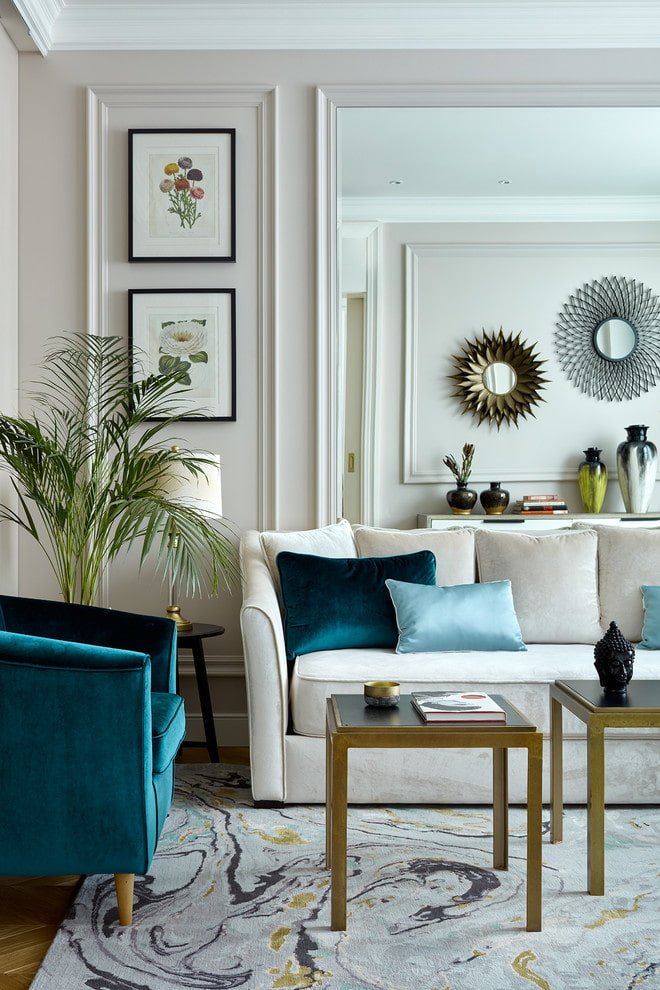
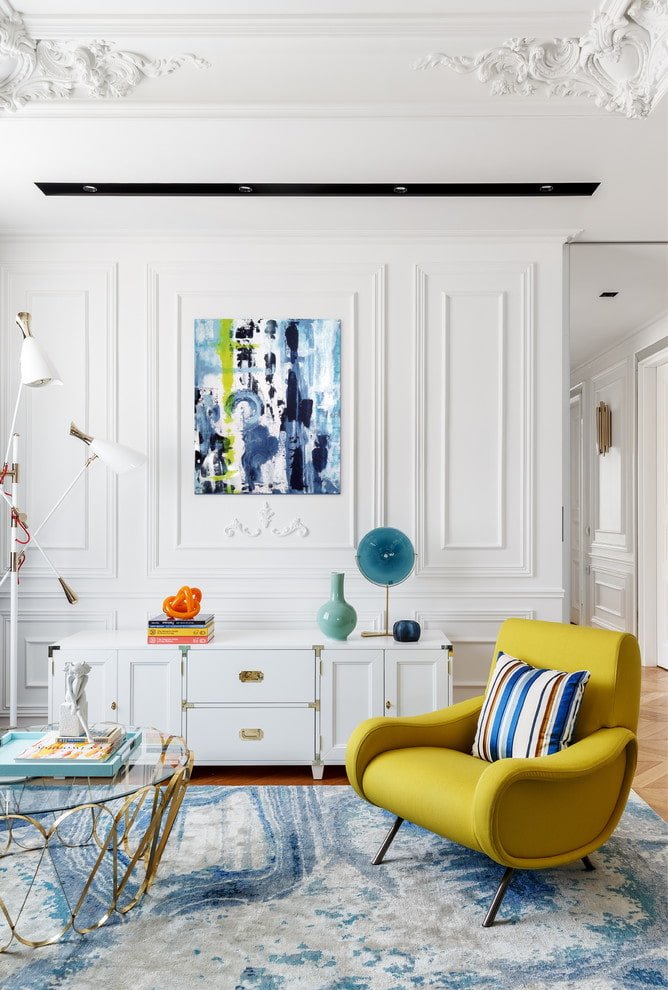
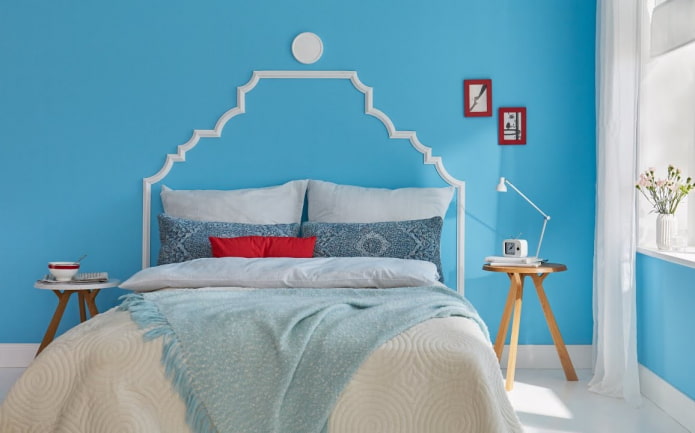
In the photo bedroom interior with stylish headboard decor.
What types are there?
The choice of molding type depends on the type of room and the style of the interior. Now I will show you a list of types of materials and tell you about their features:
- Wood (including MDF). It is lightweight and easy to install. Wooden decorative strips do not emit toxic substances and therefore can be used to decorate walls in a child’s room or bedroom. Due to the beautiful natural pattern and naturalness, such moldings have high aesthetic qualities and go well with identical wood paneling.
- Gypsum. Massive gypsum decor, associated with stucco and palace decorations, fits harmoniously into classic interiors, and also complements styles such as neoclassicism or art deco.
- Metal. Due to the polished surface and strict execution, aesthetic and original metal models are often used in modern design in the loft or high-tech style.
- Polyurethane. Flexible polyurethane products allow you to design a rounded, radius or curved surface. Such strips are easily bent and fixed in any desired position.
- Foam plastic. One of the popular types, which is characterized by low cost, low weight and high moisture-resistant qualities. Foam plastic elements are suitable for rooms with any microclimate and functional purpose. In addition, plastic models have a diverse color palette from bright acid colors to deep black.
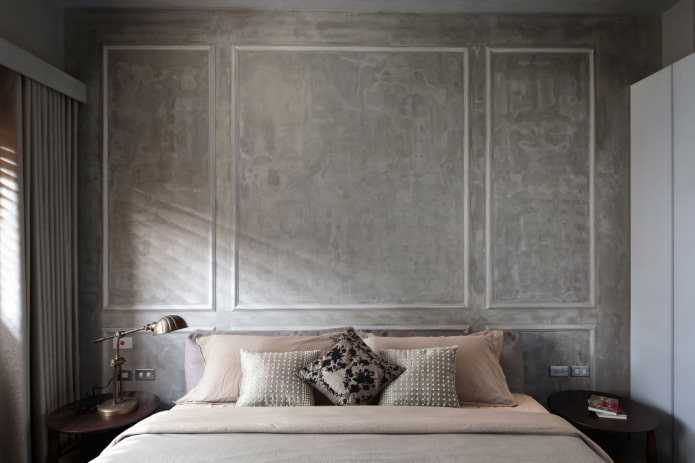
The photo shows painted metal moldings in the interior of a loft-style bedroom.

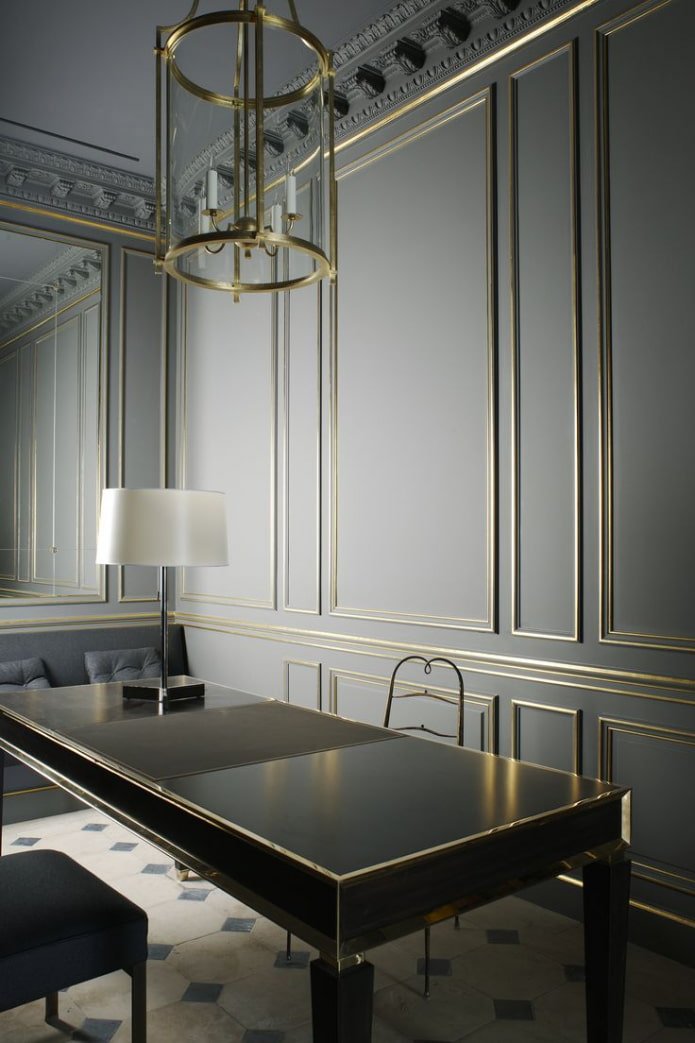
The budget option also includes moldings made of MDF or polystyrene foam. They are usually used with subsequent painting. And due to their light weight, they can be easily attached directly to the wallpaper.
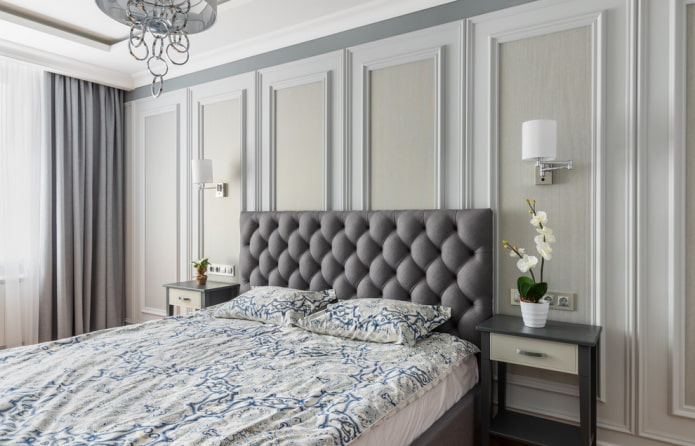
The photo shows a bedroom decorated with white polyurethane frames.
How to place on the wall?
Taking into account all the placement rules, a competent combination of the size and shape of the planks, you can correct many of the layout flaws of the room.
Moldings are mainly placed on the walls horizontally or vertically. Also, using these elements, repeating blocks are created, due to which the space visually becomes more voluminous. With the help of narrow rectangles in the form of vertical frames or half-windows directed upwards, the ceiling in the room will look higher.
To visually adjust the proportions of a small room, you can choose wide decorative panels in the same tone as the ceiling covering and place them horizontally.
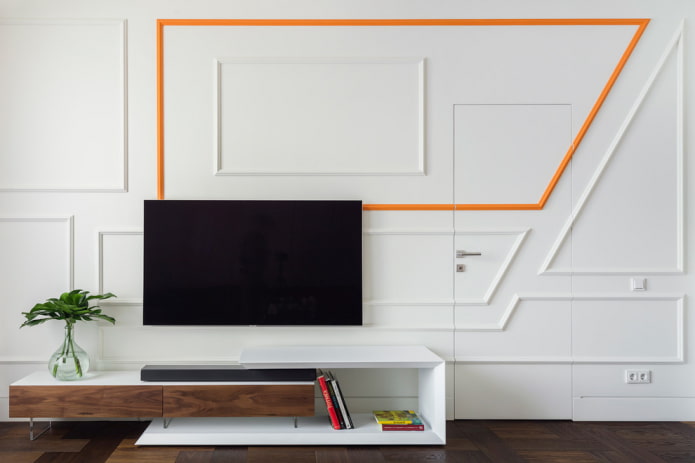
The photo shows an asymmetrical arrangement of moldings around the TV in a modern interior.

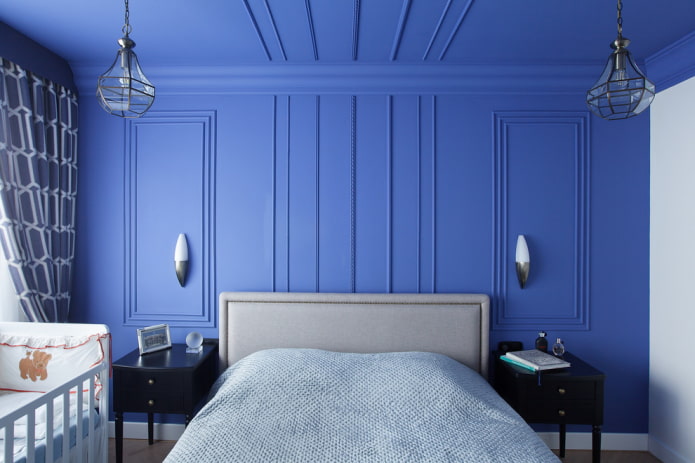
Moldings are almost always used to create three-dimensional compositions that include frames or interestingly intertwined planks. For example, for certain sections of a large wall surface, you can use symmetrical design, so the design will acquire a beautiful and expensive look.
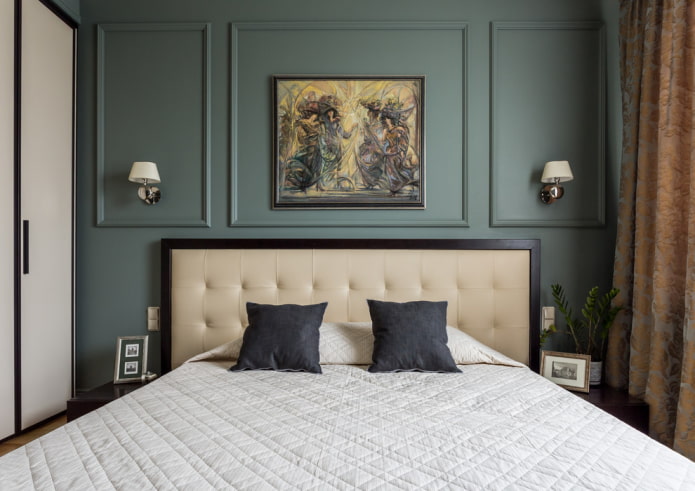
The photo shows rectangular blocks above the headboard.
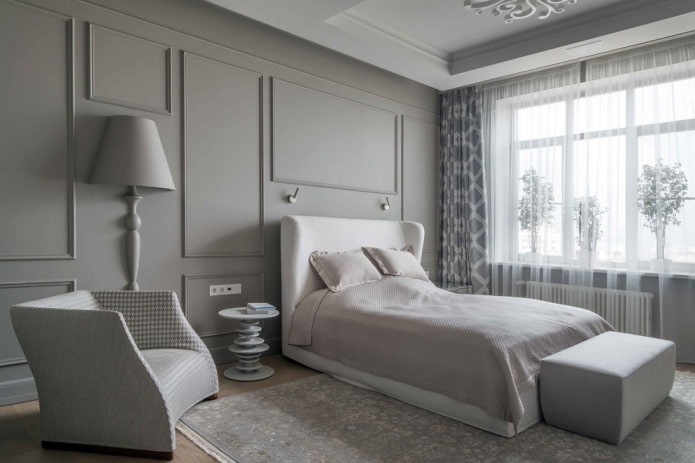
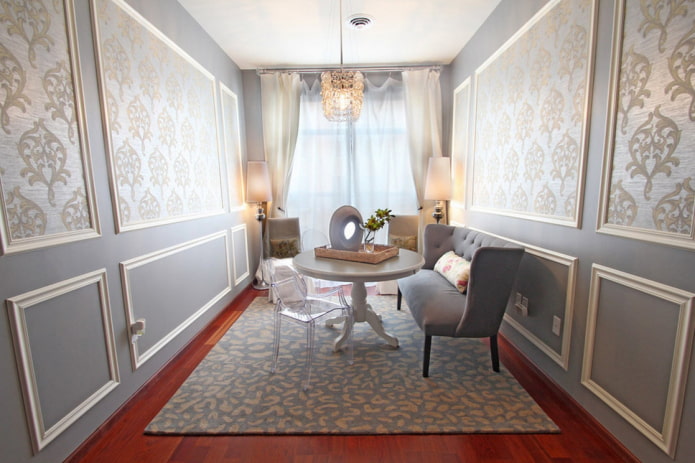
Traditional rectangular sections of moldings are suitable for a room with a high ceiling and light finish. With the use of curved strips, you can form semicircular arches or imitation windows.
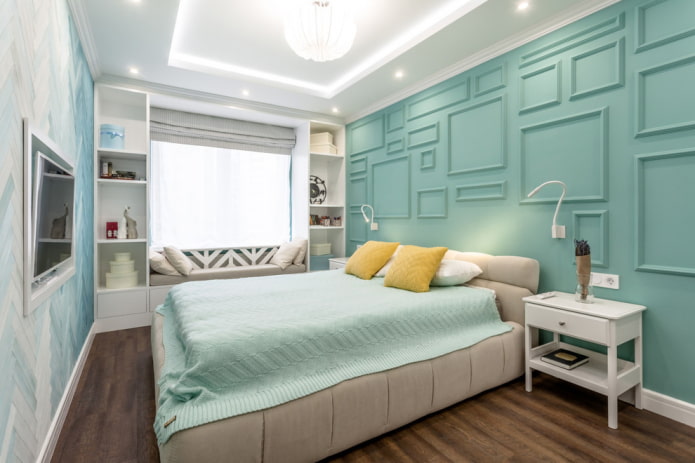
The photo shows the interior of a bedroom decorated with chaotic frames.
Examples in the interior of rooms
Thanks to moldings, you can make a stylish accent on the wall and bring a certain rhythm to the environment.
Kitchen
A wall composition of decorative strips allows you not only to zone the kitchen space, but also, on the contrary, to harmoniously combine different areas with each other.

The photo shows gilded planks near the dining area in the kitchen interior.
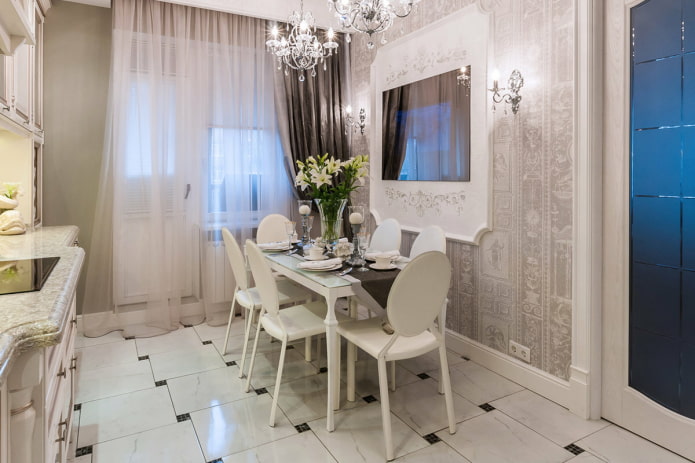
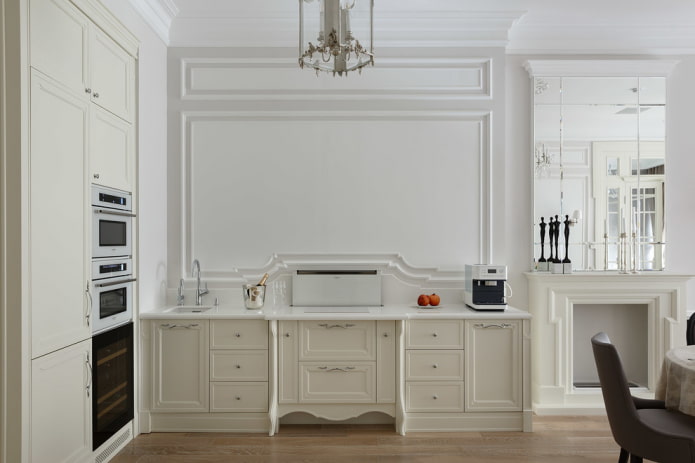
Moldings are often found in the kitchen in decorating arches or doorways, this design gives the entrance expressiveness. A window with wide planks around its perimeter will look no less beautiful.
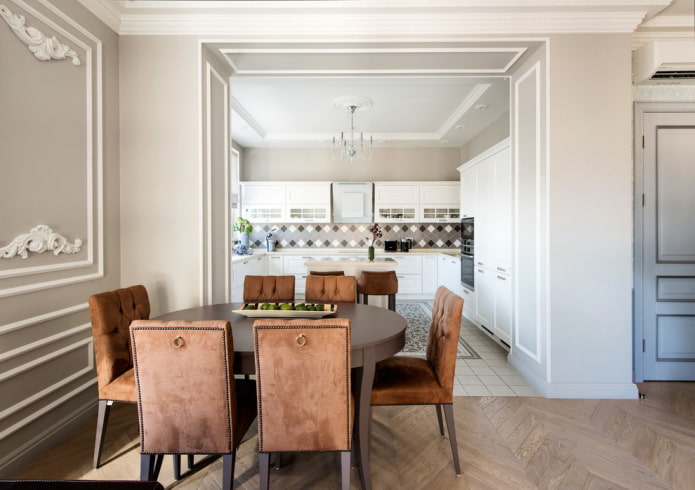

Living room
Using planks, the room is divided into symmetrical blocks, which are decorated with mirrors, paintings, artistic bas-reliefs, hanging shelves or wall sconces. Also in the interior of the living room, moldings are often used to separate wallpaper or other materials of different textures and shades.
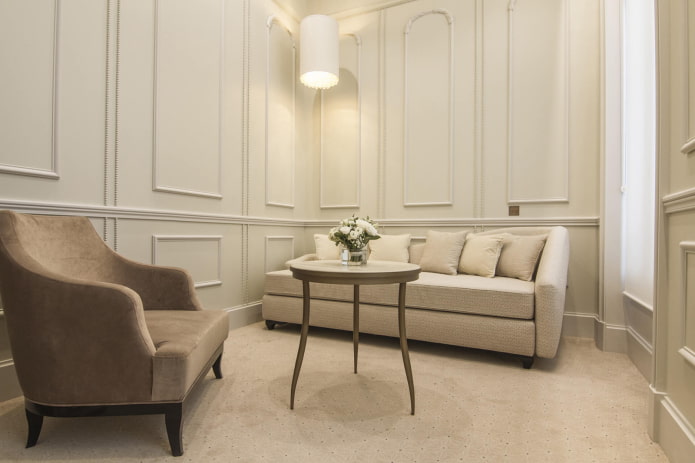
The photo shows a small living room in beige tones, decorated with narrow frames.
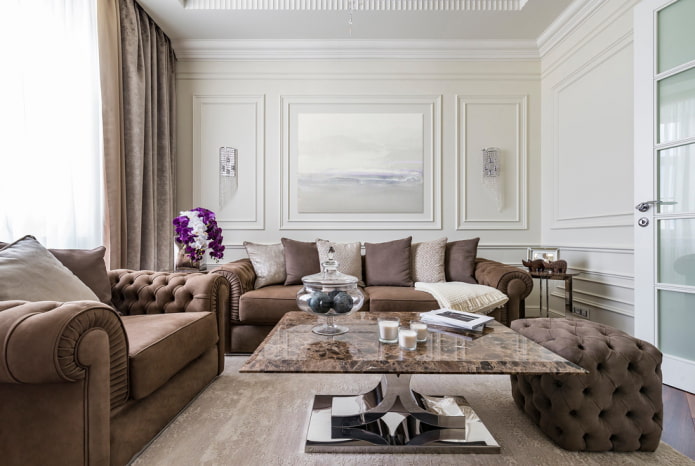
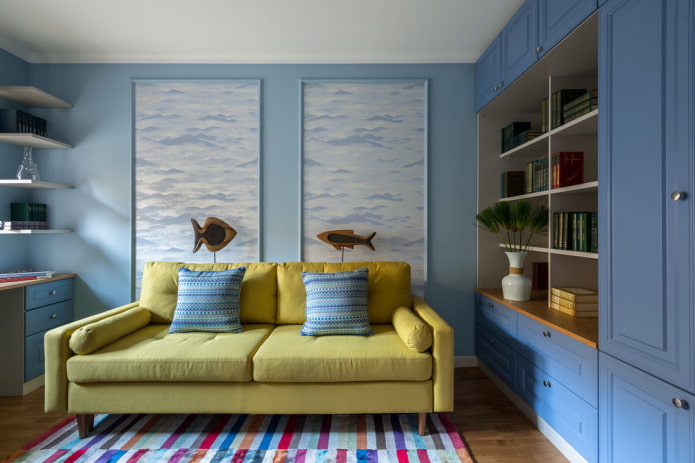
These elements are also perfect for framing a doorway, column or even a TV area.
A wallpaper insert decorated with moldings along the perimeter can not only become the main accent of the room, but also highlight a certain piece of furniture in the form of a spectacular chest of drawers, an aquarium or a decorative fireplace.
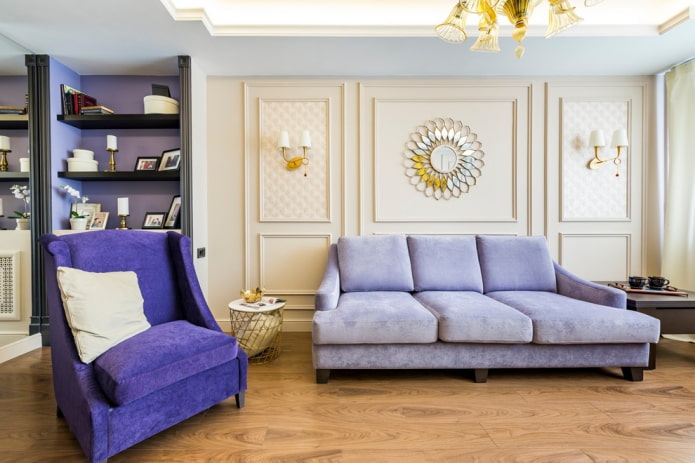
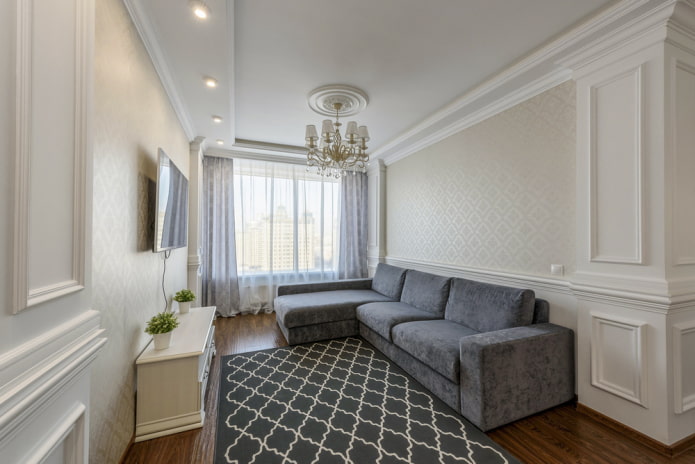
Bedroom
Narrow slats in pastel colors or in the same color as the walls are suitable for decorative design of the bedroom. Darker inserts framed with thin, discreet strips look impressive on light wall surfaces. In the middle of the section, you can place a painting, moldings, and other three-dimensional decor.
In a large bedroom, zoning the room into separate functional areas will be an interesting solution. Using wall moldings, you can divide the room into a sleeping area and a work area or a makeup table.
A wall with a molding frame that matches the size of the bed will advantageously emphasize the interior composition and overall design concept.
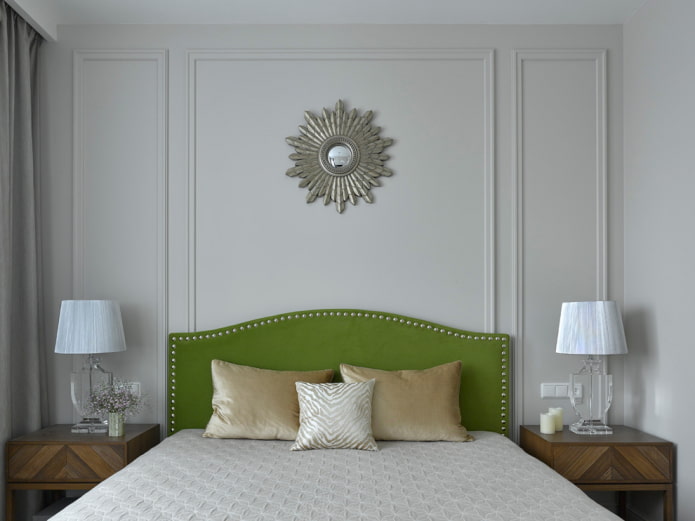

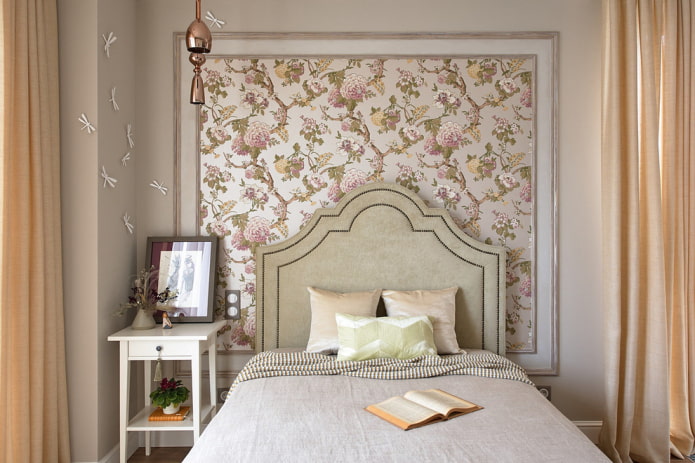
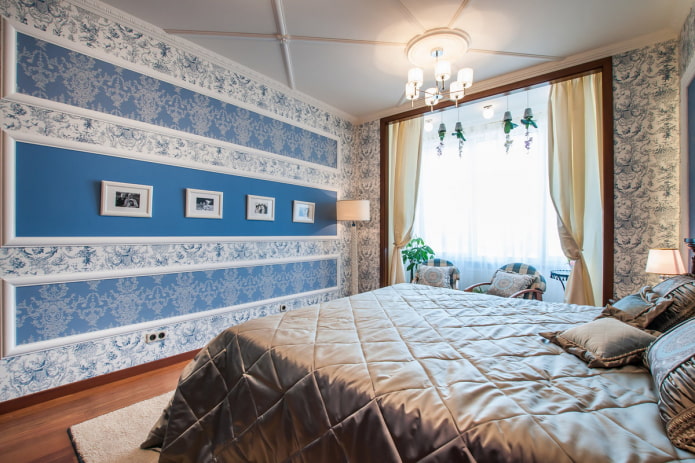
The photo shows different types of wallpaper separated by moldings in the bedroom interior.
Hallway or entrance hall
Moldings are most often used to highlight the entrance door. Relief elements can be used to decorate a mirror with wall lamps. In a small hallway that does not allow for a closet, you can use planks to mark out an area with hooks and a clothes hanger.
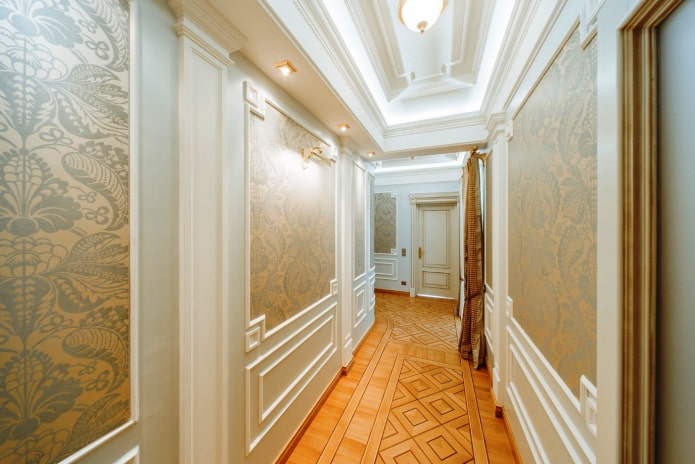

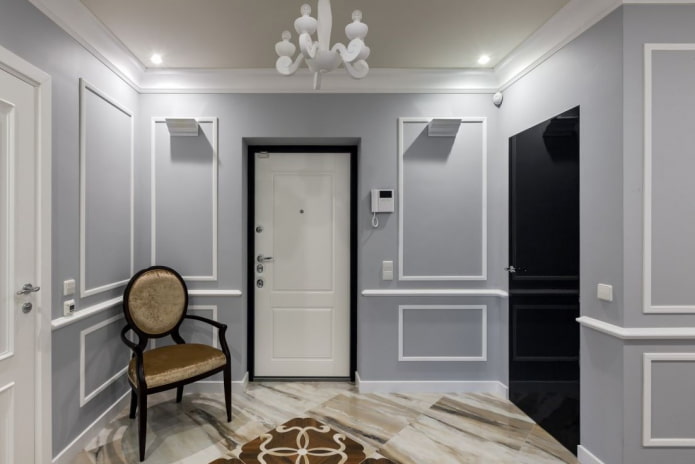
In the photo, white frames successfully combine with the design of the gray walls in the interior of the hallway.
On the walls of the stairs
The planks glued horizontally not only diversify the wall cladding, but also adjust the height of the staircase.
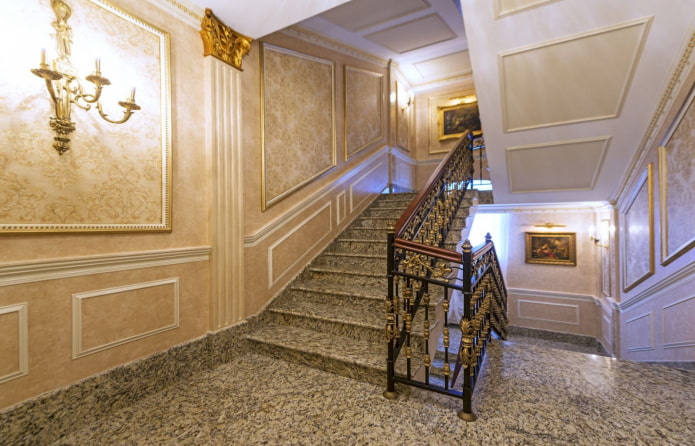
In the photo, a staircase with gilded moldings.
Children’s room
Thanks to such decorative elements, you can easily zone a room for two children or emphasize the study area. The combination of ceiling and wall finishes will make the design complete without overloading it. The interior with walls decorated with moldings in contrasting colors will look very original.
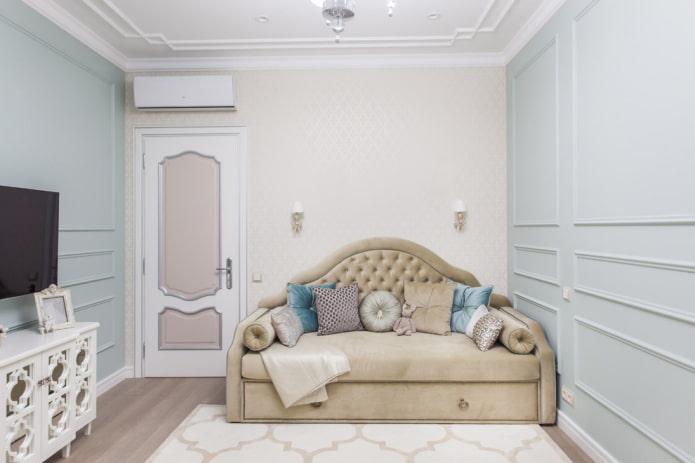
The photo shows painted walls decorated with single-color moldings in the interior of the nursery.
How do they look in different styles?
Molding decor can be used in absolutely different ways in different stylistic directions.
Modern style
In this design, modified varieties of moldings made of metal and plastic are used, which frame individual areas, decorate corners or joints. Thanks to such delicate decor, it is possible to decorate plain walls and enliven the surrounding space using a minimum number of elements.
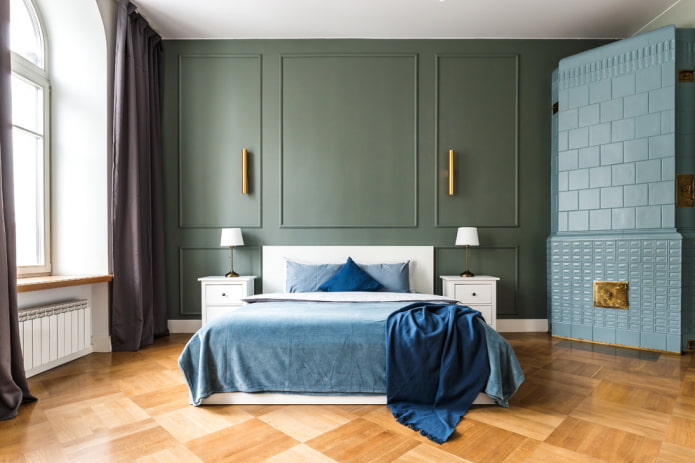
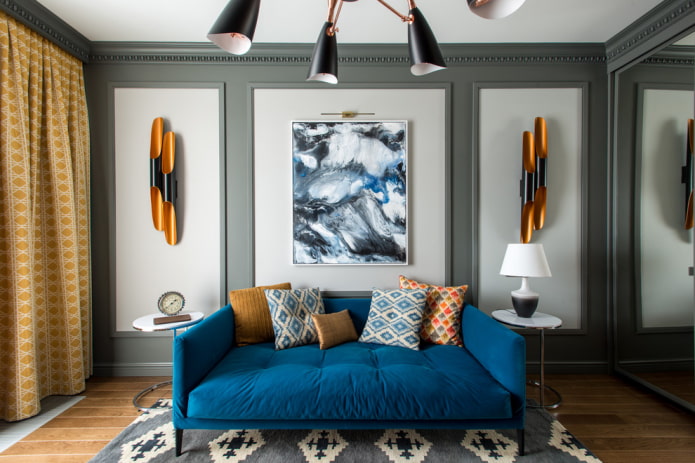
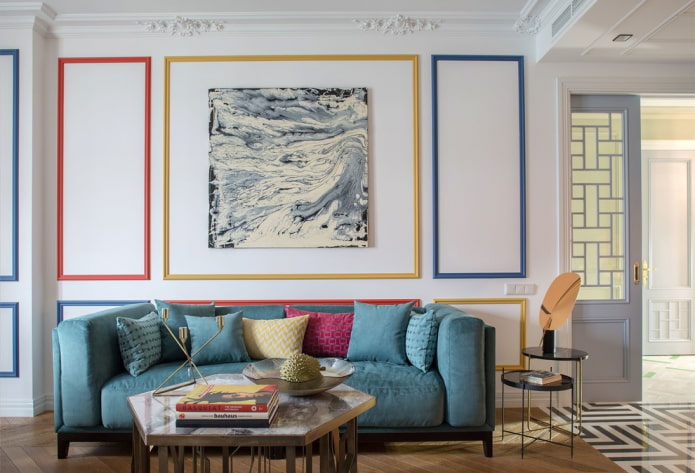
The photo shows a living room in a modern style with a colored composition of moldings.
Classic style
Luxurious golden, silver or patinated planks with a relief texture will look good in the classic style. The classic design involves natural moldings made of wood or models made of white plaster.
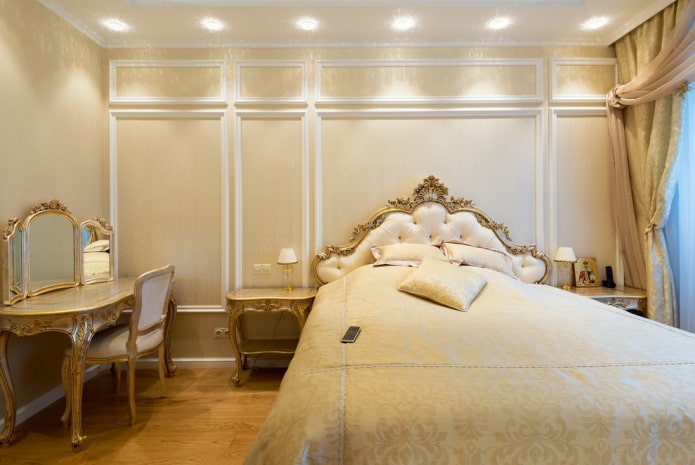
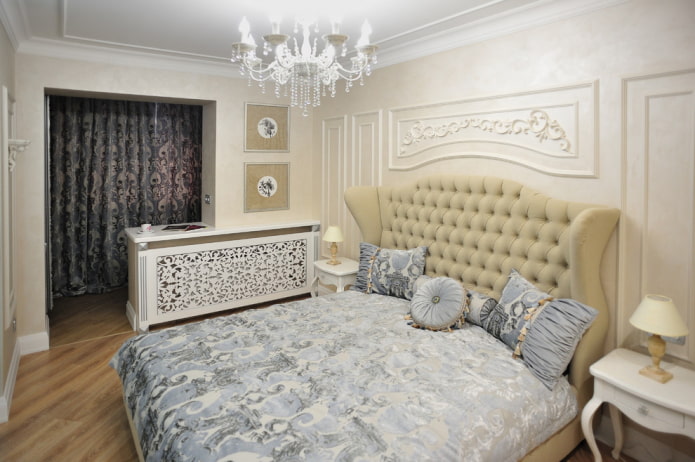
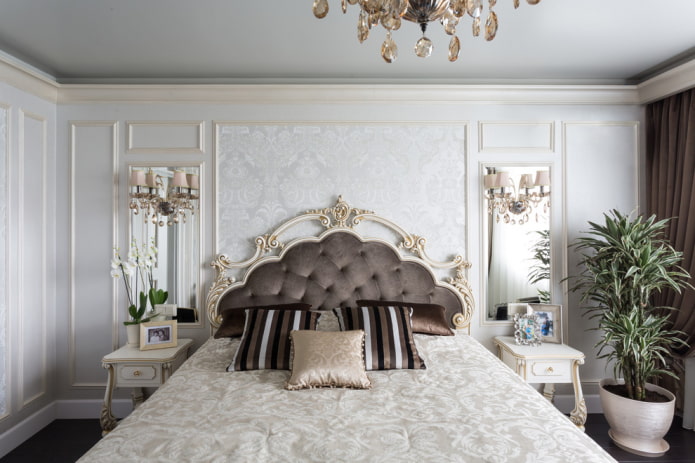
Neoclassicism
Moderate decor, characterized by strict geometric shapes and unobtrusive ornaments, is suitable for elegant neoclassicism.
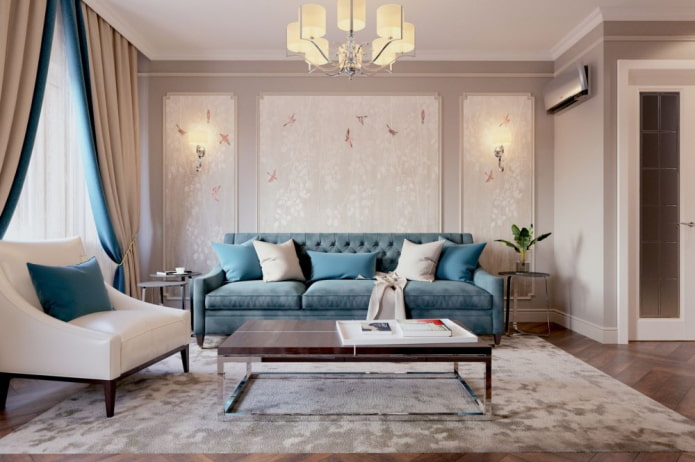
The photo shows a living room in neoclassical style with rectangular moldings in the interior to separate the wallpaper behind the sofa.
Now reading:
- Horizontal blinds: 66 photos, designs, types and interior solutions for windows.
- Modern in the living room: 40 photos and interior design tips
- Mirrors in living room design: 55 stylish photos and inspiration for the hall
- Explore the Versatile Mercedes Vito Van
- Mercedes CLA and CLA Shooting Brake Models